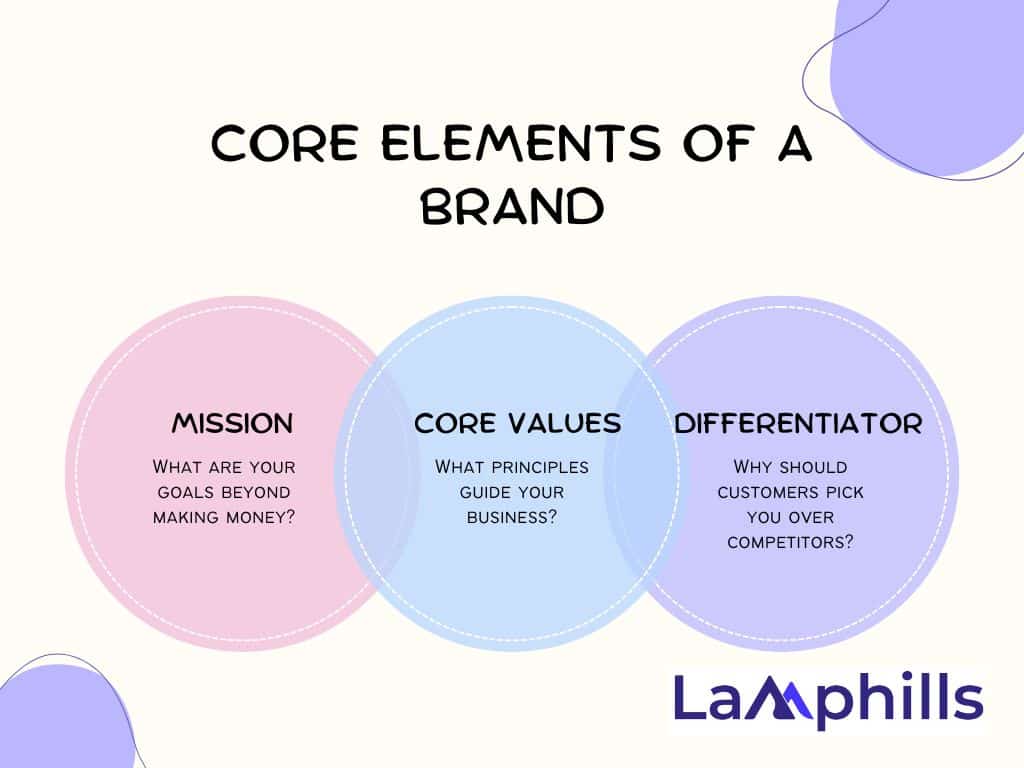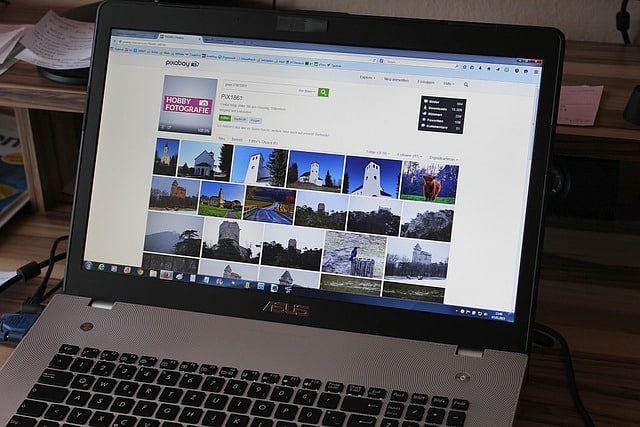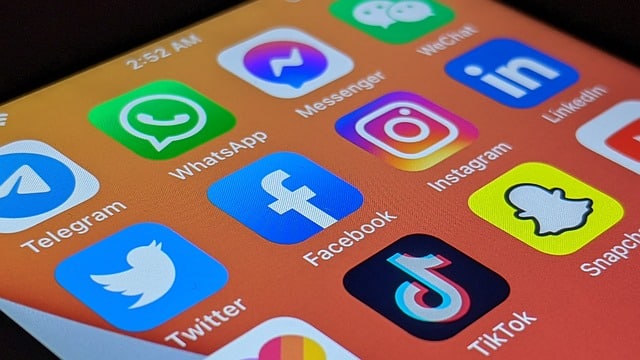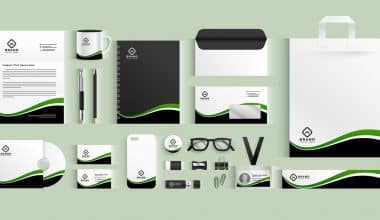Branding on a budget doesn’t mean sacrificing quality for impact. One of the biggest misconceptions I hear is that effective branding requires a huge budget. Through trial, creativity, and experience, I’ve seen that it’s entirely possible to build a powerful, recognizable brand with simple, cost-effective strategies.
When you’re working with a tight budget, it’s tempting to put branding on the back burner. You might think strong branding is only for big names like Nike, Apple, or Google.
But the truth is, that good branding is just as essential for small businesses. It helps you grab potential customers’ attention, guide your marketing, and boost your sales.
While big companies may have more money to spend, you can still build a strong brand with a smaller budget, all you need is the right plan to make it work. Keep reading this post to learn more.
Key Points
- You don’t need a huge budget to create a memorable brand; smart, cost-effective strategies can make an impact.
- Share your brand’s story and values to build trust and recognition without the high costs of an agency.
- Affordable tools like free logo makers and social media can boost your brand presence and professionalism.
- Understanding your audience lets you target your brand effectively, even on a tight budget.
- A consistent brand look and message across all platforms strengthens customer loyalty and drives revenue.
Understanding Budget-Friendly Branding
“Branding on a Budget” means creating a strong, memorable brand identity without spending much money. It’s about using low-cost strategies and tools to make your brand stand out, connect with people, and build trust.
Instead of hiring expensive agencies, you focus on things like telling your brand’s story, sharing content on social media, collaborating with other small businesses, and using affordable design tools. This way, you can create a professional and unique brand presence that resonates with your audience, all while keeping costs low.
Affordable branding might seem impossible for small businesses and new entrepreneurs. After all, building a brand takes more than just a logo. You’ll need to do market research, design your visuals, define your brand’s personality, and more. But by prioritizing these essentials, you can build a brand that grows with your business without breaking the bank.
Is Budget-Friendly Branding Possible?
As a branding agency, we’ve helped companies of all sizes create strong identities. Not every business we work with has a large budget for branding, but you don’t need to spend a lot to get started.
Many companies think building a powerful brand costs thousands of dollars. While investing in your brand over time is important to stay ahead of competitors, you can set up the basics of your brand without overspending.
The key is working with an expert and creating a smart plan to build brand awareness and recognition without a big budget. Remember, every dollar you put into your brand can pay off. For example, 46% of customers are willing to pay more for brands they trust. But first, you need a brand that connects with them.
Having a consistent brand can also help grow revenue. In fact, over two-thirds of businesses say that brand consistency has helped boost their revenue by 10% or more. Good branding does cost money, but you can still create a quality brand on a budget and see a strong return on investment over time.
For many small business owners, branding has to be done on a tight budget — especially during tough times.
Whether you’re a local bakery with ten employees or a manufacturing business with up to 500 people, you’re still considered a small business. No matter the size, every small business shares the same main goal at the start: to make a name in their field.
There are plenty of ways to do this without spending a lot. Below are some tips on branding your business on a low budget.
Budget-Friendly Branding: 14 Simple Tips to Save Money
Are you wondering how to start branding on a budget? When clients come to us with limited funds, we focus on one main thing: strategy. Careful planning helps you make the most of every dollar in your branding budget.
Here are our best tips for keeping your branding costs low:
#1. Gather Detailed Customer Insights
To make a brand that connects with your target audience, it’s essential to understand who they are. Doing market research doesn’t have to be expensive. Start by using free resources to gather as much information as possible. Look at what your competitors are doing and study free online market reports. Try free trials of tools like Ahrefs and SEMRush for in-depth research.
Surveys and interviews are also low-cost ways to learn about potential customers. If you’re a small business, focusing on a specific niche can reduce costs and help you stand out.
After collecting your information, use free templates to create customer profiles. These profiles should outline your customers’ basic details, attitudes, challenges, and needs.
Below is a Customer Profile Template to help you understand the people you’re trying to reach. By filling in each section, you’ll create a clear picture of your ideal customer—their interests, struggles, and what they value in a brand.
With this insight, you can make smarter, budget-friendly decisions that connect with your audience and build trust.
#2. Identify Your Brand’s Core Elements

The clearer you are about what your brand stands for, the easier it is to create a brand that appeals to your customers.
When building a brand package, we focus on these key points:
- Mission: What are your goals beyond making money? For example, Tesla’s mission is to promote sustainable energy.
- Core values: What principles guide your business? Think about whether your brand is built around innovation, customer service, or another focus.
- Differentiator: Why should customers pick you over competitors? What unique benefits do you offer?
Analyzing your competitors can also help with this. Use free tools like SEMRush’s trial version to explore their keywords, popular content, and other helpful information.
#3. Develop a Unique Brand Personality
Once you know your target customers and the basics of your brand, work on creating a personality that stands out. A strong personality can give even a small brand with a limited budget a competitive edge.
For instance, brands like Dollar Shave Club and BrewDog entered their markets with humour and connected with customers by making their brands memorable.
Consider how you want customers to remember your brand and connect with their emotions. Creating editorial guidelines can help keep your brand’s personality consistent across all your marketing efforts.
#4. Choose a Brand Name That Stands Out
When starting a new brand, a few basics will help you attract and keep your audience’s interest, and your name is a big part of that. It’s more than just a title on your website or business card; it’s a way for customers to quickly understand who you are and what you stand for.
Take Tesla, for example – its name honours a famous scientist, creating an instant connection to innovation. If you’re stuck on ideas, try using a free name generator for a boost, but don’t rely on it too much. These tools often provide generic options and may not tell you if a name is already in use.
#5. Build Your Brand’s Look
Like your brand name, the visuals you use are key in connecting with your target audience. While it’s best to work with a designer, you can begin brainstorming ideas with free online tools. Create a digital mood board to gather inspiration, including examples of brands you admire, font styles that speak to your audience, and other visuals.
You can also use tools like Coolors to create colour schemes. Think about what each colour says – colour psychology plays a big role in how people see your brand. This prep work will form the base for your brand style guide, which will make it easier (and cheaper) to work with designers on logos and other graphics down the line.
#6. Design a Budget-Friendly Logo
Logo design can be costly, but you can still start simple if you’re on a budget. Use free logo generators to create a basic design, or choose a unique font for a straightforward wordmark logo.
These budget logos may not be perfect forever, but they’re a good starting point. Over time, you can improve them with the help of a designer. Aim for a logo that reflects your brand’s core values. The colours, fonts, and shapes you use can say a lot about your brand to customers.
#7. Create a Good Website

Image by Csaba Nagy from Pixabay
Just like designing a logo, building a website can be costly, but having your own website is important in today’s online world. It helps you connect with loyal customers and introduces new people to your brand.
In the past, making a website was tough, needing a lot of tech knowledge and money. But now, anyone can make a website for a small cost. Many affordable tools are available to help you get started.
You can build a website on platforms like WordPress, where you only need to pay for hosting and your domain name. Other options, like Wix and Squarespace, offer easy templates and tools for marketing and business management.
When building your website, make sure each page uses your brand’s colors and logo to keep your look consistent. Highlight your brand’s personality, story, and history to help customers connect with you.
It’s also smart to use some basic SEO strategies, like making sure pages load fast and adding keywords in descriptions and tags to help your site show up in search results.
#8. Try Low-Cost Marketing Ideas
A big part of building your brand is reaching customers on the right platforms. Your brand colours, name, and logo won’t help much if people don’t see them.
When planning your marketing, look for low-cost options with good returns. Email marketing, for example, is an affordable way to stay in touch with your audience and build relationships.
Local businesses can also try attending events or trade shows. Content creation is one of the most affordable ways to show your expertise, connect with customers, and build trust. The key is to make content that matters to your audience.
Use tools like Ahrefs and SEMrush to find popular keywords with low competition and respond to common customer questions from sites like Reddit.
Make sure all your content reflects your brand’s mission and personality by following a style guide.
#9. Use Affordable Branding and Marketing Tools
There are many free tools that can help you create brand colours, business names, and simple logos, but there are also great tools for enhancing your brand in other ways.
If you don’t have the budget for professional photos, use a good phone camera to take authentic photos of your business behind the scenes. Stock sites like Shutterstock, Adobe Stock, and Unsplash can provide quality images for your blog or social posts.
Free keyword tools can also help you find topics to write about that will boost your ranking in search results.
For email marketing, tools like Brevo offer free plans for beginners, allowing up to 300 emails per day.
#10. Use Social Media

Image by AzamKamolov from Pixabay
Social media is a fantastic, cost-effective way to build your brand and reach customers. Even if you don’t have a big website, the right platforms can help you show off what makes your brand unique.
Start by finding out which platforms your customers are most active on. If you’re targeting other businesses, LinkedIn may be best, while brands aimed at younger audiences might focus on TikTok and Instagram.
If you already have content creators on your team, you can easily run social media campaigns with little cost. Try using tools like Canva to make visually appealing templates for your posts.
When using social media, ensure your team adheres to your brand’s look and feel—like colors, images, and voice—across all posts. Pay close attention to which campaigns are catching your customers’ interest.
Most social platforms also offer free insights, like engagement rates and post views, which can help you make smarter budget decisions.
#11. Think About Affordable Partnerships
Even with great marketing materials, it can be tough to stand out on a small budget, especially since customers often hesitate with unfamiliar brands.
One smart way to get noticed without breaking the bank is by partnering with other brands. This doesn’t have to mean a full co-branding project. You could connect with other businesses to run a social media contest or exchange services for support with marketing.
Another option is to work with micro or nano influencers who already connect with your target market. These influencers can boost your brand’s credibility and drive more people to your social pages and website.
#12. Focus on Customer Experience
Building a strong brand isn’t just about designing a great logo or impressive product packaging. Your brand is shaped by everything you do to stand out to your audience. This includes how you make customers feel when they interact with your brand. The more you work to make your customers happy, the stronger your brand becomes.
Providing excellent customer experiences, like quick responses to questions or helping them pick the right product, leaves a lasting impression. It doesn’t just set you apart from competitors; it also builds customer loyalty, with some customers even becoming brand advocates. Studies show that 72% of people share positive experiences with six or more people.
A great customer experience also helps you keep your customers, increases their lifetime value, and can give you helpful marketing content, like reviews and customer photos. These real customer insights can enhance your social media and make your website content more trustworthy.
#13. Try Creative, Low-Cost Marketing Ideas
People often think that creative marketing has to be costly, but there are many affordable ways to experiment. For example, if you’re reaching out to business clients, events are a great way to build connections.
Instead of hosting a costly in-person event, you could host unique online events or webinars, which are much cheaper. If you’re interested in podcasting, you could start by being a guest on other podcasts to build your brand.
Other budget-friendly methods include:
- Running video ads on YouTube or TikTok instead of expensive TV commercials.
- Writing guest posts to reach new audiences instead of paying for ad placements.
- Running digital ads on platforms like Facebook instead of spending on billboards or local ads.
#14. Keep Learning and Adjusting
Affordable branding is possible with the right planning and strategy. To make sure you’re spending your marketing budget wisely, focus on collecting data. The more you learn about your audience by reading reviews, researching competitors, and studying market trends, the stronger your branding and marketing efforts will be.
Track key metrics from your email, social media, and content campaigns to get a clear view of what’s working. By gathering data on brand impact, customer preferences, and the market, you can fine-tune your efforts. Also, stay updated on the latest industry trends so you can keep up with the competition.
Below is the Budget-Friendly Brand Identity Planner. With it, you can easily map out your brand’s key elements, like your mission, values, and personality, without needing a big budget.
This planner guides you through each step, helping you create a memorable brand that stands out. Whether you’re just starting or looking to refresh your brand, this template will help you connect with your audience in an authentic, affordable way.
Conclusion- Maximize Your Brand Budget
Building a brand on a budget might seem challenging, with many costs like logo design and marketing campaigns adding up quickly, but it doesn’t have to cost a fortune.
By creating a strong brand story and presence in your industry doesn’t have to be expensive. With a bit of creativity, the right approach, and some hard work, any business can develop a solid brand without overspending.
In fact, many smaller companies have achieved great success with limited funds, and we’ve helped non-profits shine on a small budget.
If you’d like help with affordable branding, reach out to the Lamphills team to see how we can help you grow without going off your budget limits.
Frequently Asked Questions
What are the types of branding?
Different types of brands include single products, groups of products, services, organizations, people, groups, events, places, store brands, media, and online brands.
What is simple branding?
Basic branding is how a business shares its main values with both new and existing customers. It involves the business’s brand and identity. A brand is like the personality of a business, person, or organization, carefully designed to make a certain impression.
How can I start branding?
1. Check out your competition. Before focusing on your brand, get a clear idea of who else is out there.
2. Do market research.
3. Build your brand’s personality.
4. Write a brand statement to show where your brand stands.
5. Pick a good name for your business.
6. Make a catchy slogan.
7. Design a logo that looks professional.
8. Decide on a visual style for your brand.
What is Brand Vocabulary?
Your brand vocabulary isn’t just a list of words; it’s a complete toolkit that defines how your brand speaks and connects with others. It forms the core of your brand’s voice and how it communicates with the world.
Can you start a brand with no money?
Yes, you can! You can launch your business without any money by using methods like dropshipping, print-on-demand, or selling digital products.
Similar Articles
Affordable Lingerie Brands You Need to Know: Comfort Meets Style on a Budget
Complete Branding Package for Small Businesses: Examples, What to Include and Best Practices
What Is Corporate Branding?: Why it Works and How to Create One






